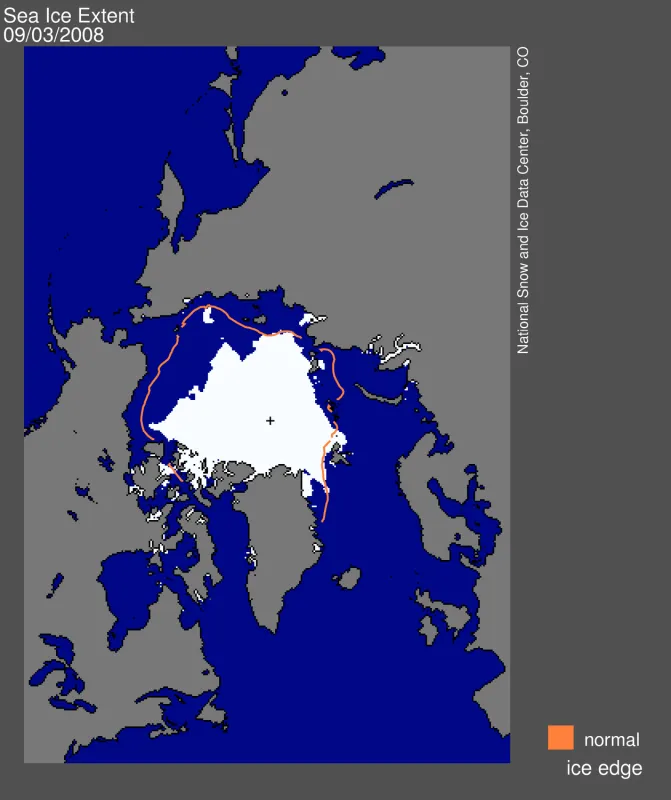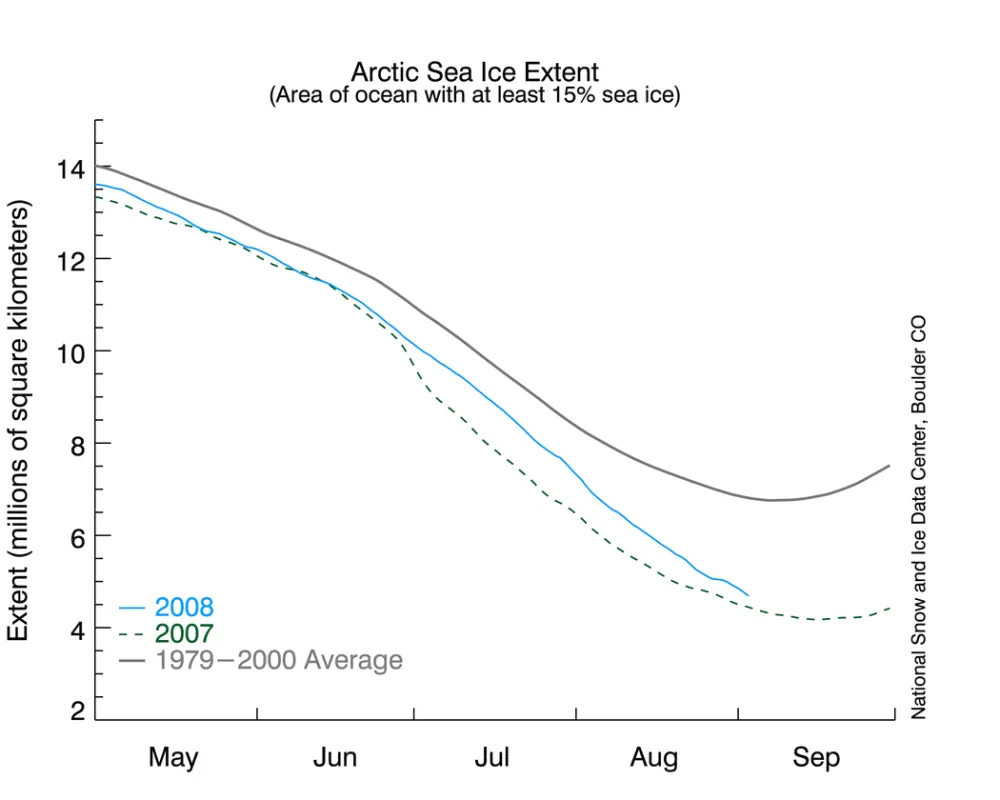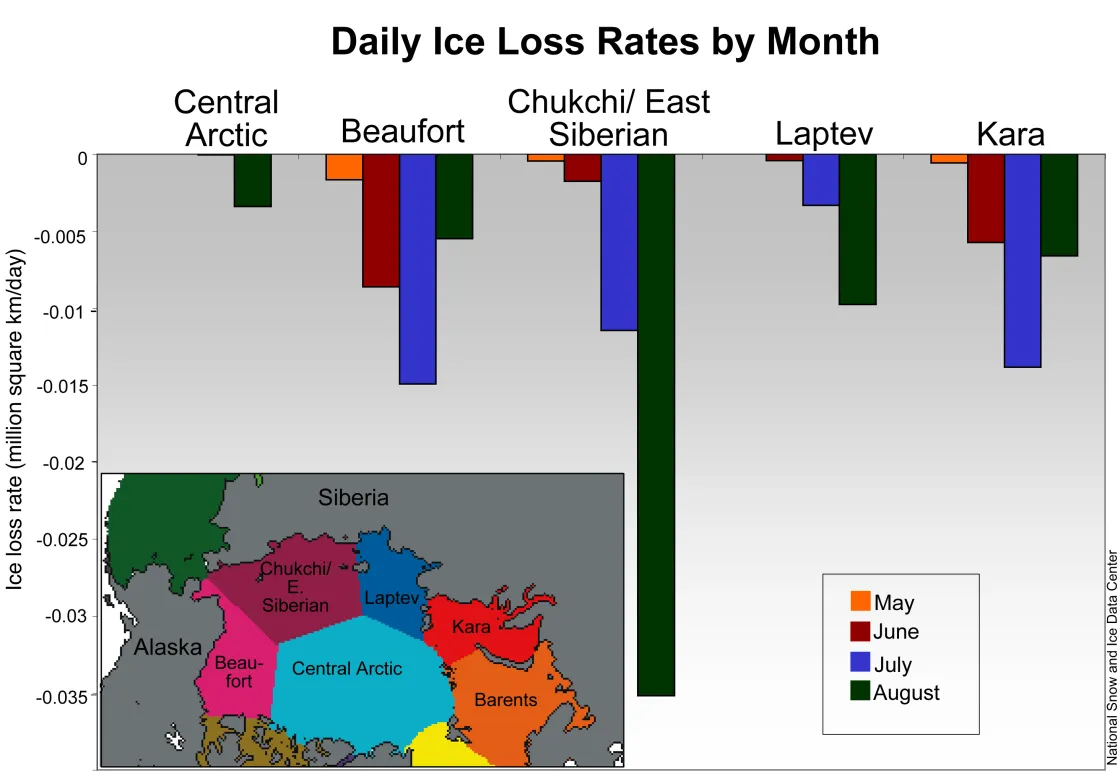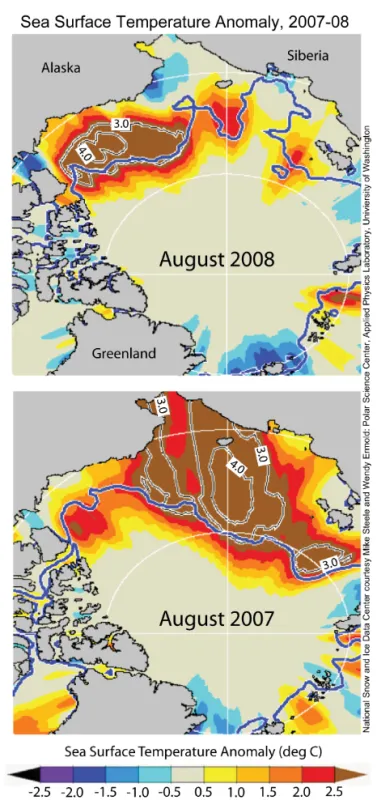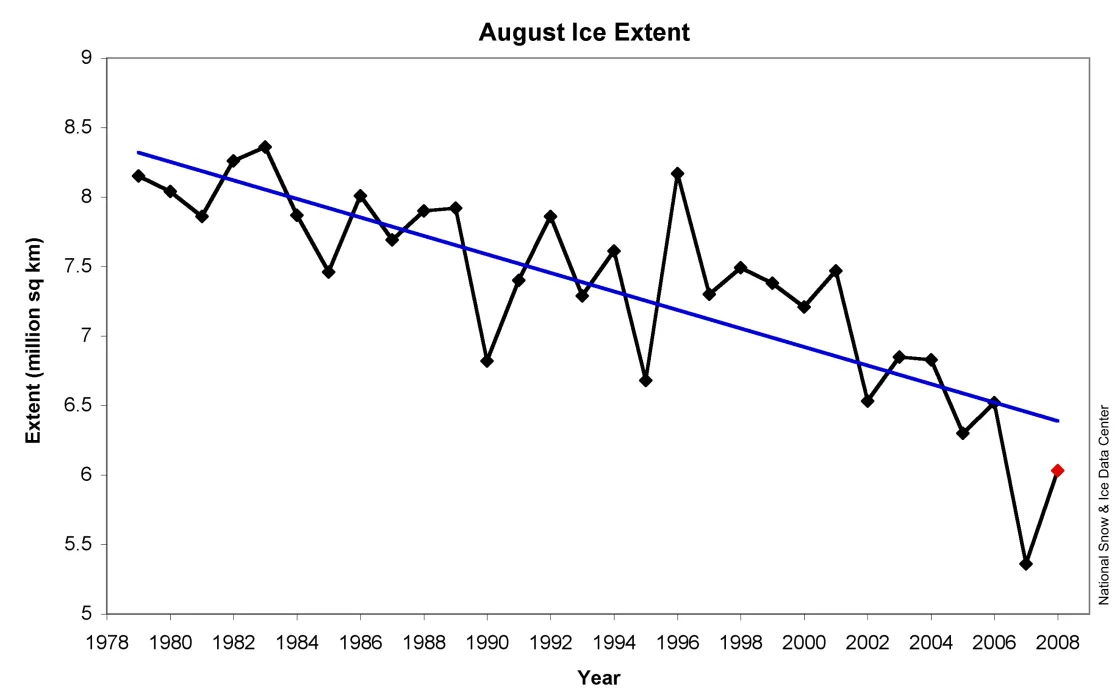Overview of conditions
Arctic sea ice extent on September 3 was 4.85 million square kilometers (1.87 million square miles), a decline of 2.47 million square kilometers (950,000 square miles) since the beginning of August.
Extent is now within 370,000 square kilometers (140,000 square miles) of last year’s value on the same date and is 2.08 million square kilometers (800,000 square miles) below the 1979 to 2000 average.
Conditions in context
In a typical year, the daily rate of ice loss starts to slow in August as the Arctic begins to cool. By contrast, in August 2008, the daily decline rate remained steadily downward and strong.
The average daily ice loss rate for August 2008 was 78,000 square kilometers per day (30,000 square miles per day). This is the fastest rate of daily ice loss that scientists have ever observed during a single August. Losses were 15,000 square kilometers per day (5,800 square miles per day) faster than in August 2007, and 27,000 square kilometers per day (10,000 square miles per day) faster than average.
This August’s rapid ice loss reflects a thin sea ice cover that needed very little additional energy to melt out.
Regional ice loss contributes to decline
What part of the Arctic contributed most strongly to the rapid August decline? Through spring and early summer, ice losses were largest in the Beaufort Sea. In August, the pattern of ice loss changed, with the greatest ice losses shifting to the Chukchi and East Siberian Seas.
The shift in location of maximum ice losses was fueled by a shift in atmospheric circulation. A pattern of high pressure set up over the Chukchi Sea, bringing warm southerly air into the region and pushing ice away from shore. August air temperatures in the Chukchi Sea (at 925 millibars pressure, roughly 750 meters [2,500 feet] in altitude) were 5 to 7 degrees Celsius (9 to 13 degrees Fahrenheit) warmer than normal. Ice loss in the Chukchi and East Siberian Seas averaged 14,000 square kilometers (5,400 square miles) per day faster than in 2007.
Sea ice also experienced an unusual retreat north of Ellesmere Island during August. Partial collapse of ice shelves in the region attended this retreat. Visit the Trent University press release at: http://www.trentu.ca/newsevents/newsreleases_080903iceshelf.php.
Warm ocean temperatures
Mike Steele and Wendy Ermold from the University of Washington’s Applied Physics Laboratory Polar Science Center have been closely monitoring sea surface temperatures in the Arctic.
Positive sea surface temperature anomalies for August 2008 correspond with areas of ice retreat. When the ice melts, it exposes open water that absorbs solar energy; the warm ocean waters then favor further sea ice melt. An interesting phenomenon, in this regard, is that sea ice this August has been drifting into the Beaufort Sea only to melt when it encounters these warm ocean waters.
As autumn comes to the Arctic, the ocean will begin to lose its heat back to the atmosphere. This means that regions of high sea surface temperatures seen in August will be manifested as above-average air temperature in corresponding regions as autumn unfolds.
August 2008 average extent compared to past Augusts
Arctic sea ice extent averaged over the month of August was 6.03 million square kilometers (2.33 million square miles). This is 1.64 million square kilometers (633,000 square miles) below the 1979 to 2000 August average,
However, August 2008 was still 670,000 square kilometers (260,000 square miles) above August 2007, despite the record-breaking rate of decline over the past month. Why would this be? The best explanation for this is that this summer did not experience the “perfect storm” of atmospheric conditions seen throughout the summer of 2007.
Even though August ice extent was above that of August 2007, the downward trend for August ice loss has now gone from -8.4% per decade to -8.7% per decade.
